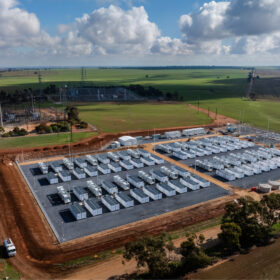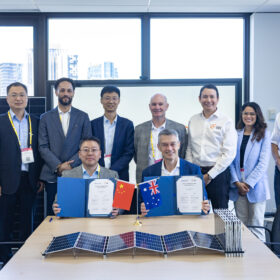In Australia, corporate fleets dominate the new car market, owning almost two-thirds of Australia’s business vehicles, with their fleet management systems projected to reach 2.7 million units by 2028. With the recent re-election of the renewable-energy-focused Albanese Government, its targets of 75% of new fleet purchases to be low-emission vehicles this year and 50% of all light vehicle sales by 2030, are increasingly likely. Along with more EV variants, falling prices, and these government policies, Australia’s EV revolution is well underway. Incentives to accelerate charging infrastructure are also now in process. As are crucial solutions to managing supply, that combine innovative technology solutions and best-in class charging experiences.
EV-NRG Chief Sales Officer, Chris Hewitt says: “Together SwitchDin and EV-NRG have developed the fastest and most reliable charging solution requiring minimal network connection upgrades to ensure fleets can make their transition to EVs quickly and safely.”
Using EV-NRG’s state-of-the-art i-charging equipment, SwitchDin recently enabled one of Australia’s largest fuel suppliers, Viva Energy, to roll out a cluster of i-charging’s ‘ultrafast’ EV chargers which are among the fastest in the world.
With a combination of SwitchDin’s innovative Virtual Energy Function (VEF) platform that continuously monitors and manages available energy in real-time, leveraging Viva’s on-site battery energy storage systems and solar inverters, the team installed i-charging’s high performance blueberry chargers that deliver instant charging power of up to 500kW across the cluster.
These EV-NRG ultrafast chargers charge vehicles from 10% power to 80% in under 20 minutes.
Hewitt said: “Now the demand for high-power Megawatt Charging Systems (MCS) is ramping up, the new global MCS Standard currently being trialled globally will also accelerate take up.”
He explained: “Across the nation we’re seeing fleets taking a leading role in the adoption of electric vehicles. In particular bus operators are quickly adopting an all-electric fleet. That’s where working with SwitchDin is key. Most charging will take place in the depot and these depots require large grid connections and often a combination of solar and batteries to support the demand.
“In the depot environment we will see some of our country’s largest charging sites with 10-100+ plugs. Integrating many megawatts of chargers into the grid requires technology like SwitchDin’s VEF platform to cleverly allocate and distribute power where it’s needed most.”
Rob Sherwood, SwitchDin Chief Product Officer said: “The architecture SwitchDin developed to support this take-up gives the Distribution Network Service Provider (DNSP) the telemetry to dynamically allocate underused power capacity to the EV charging site.
“Our cloud-based platform also enables charging sites to maximise the ROI on their energy resources through accessing reduced time-to-market with reduced time-to-revenue. It removes the bottlenecks to fast track ‘grid to EV’ charging infrastructure rollouts, without requiring any significant infrastructure upgrades, delivering cost-effective, safe, and reliable charging capacity.”






By submitting this form you agree to pv magazine using your data for the purposes of publishing your comment.
Your personal data will only be disclosed or otherwise transmitted to third parties for the purposes of spam filtering or if this is necessary for technical maintenance of the website. Any other transfer to third parties will not take place unless this is justified on the basis of applicable data protection regulations or if pv magazine is legally obliged to do so.
You may revoke this consent at any time with effect for the future, in which case your personal data will be deleted immediately. Otherwise, your data will be deleted if pv magazine has processed your request or the purpose of data storage is fulfilled.
Further information on data privacy can be found in our Data Protection Policy.